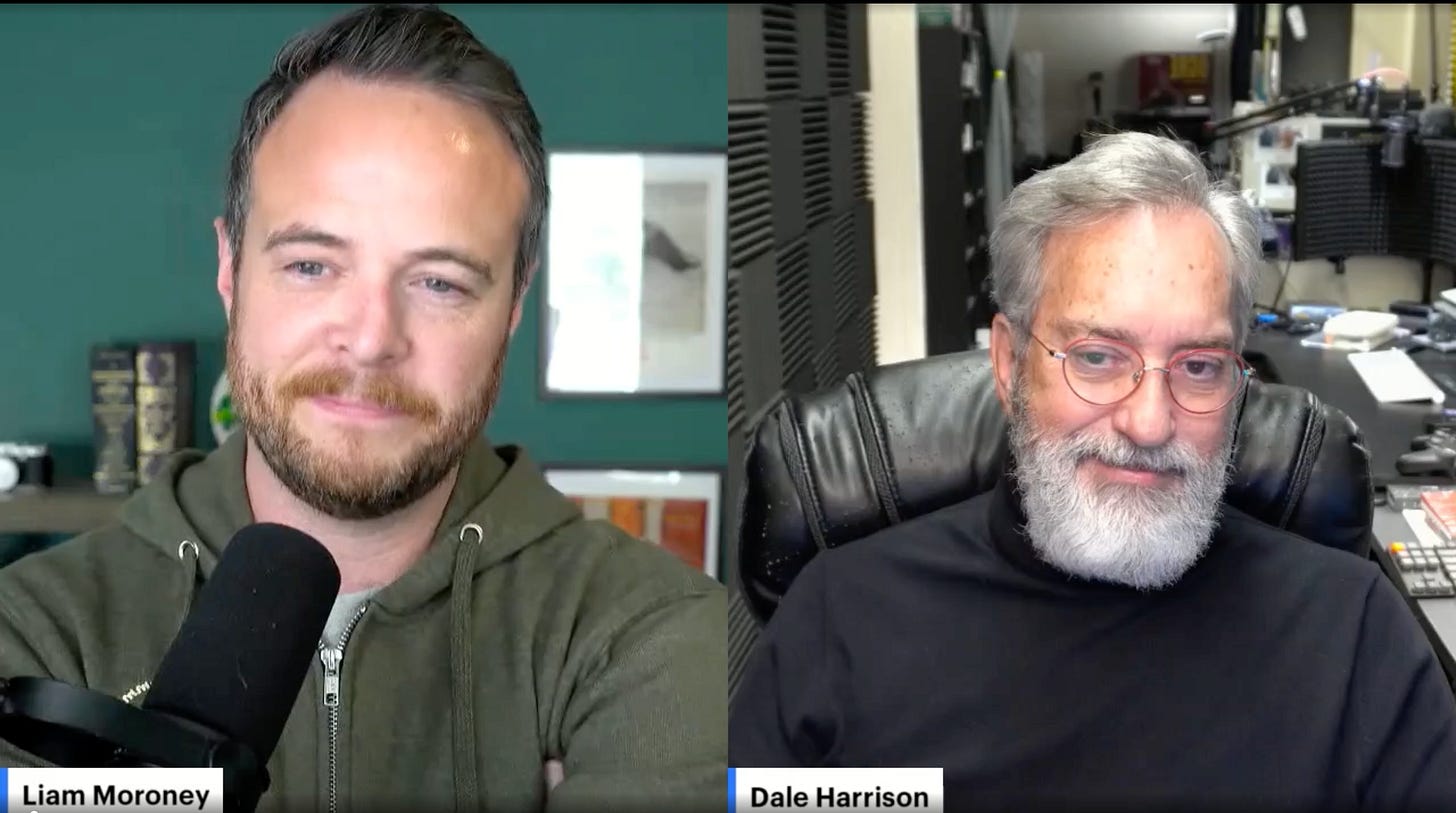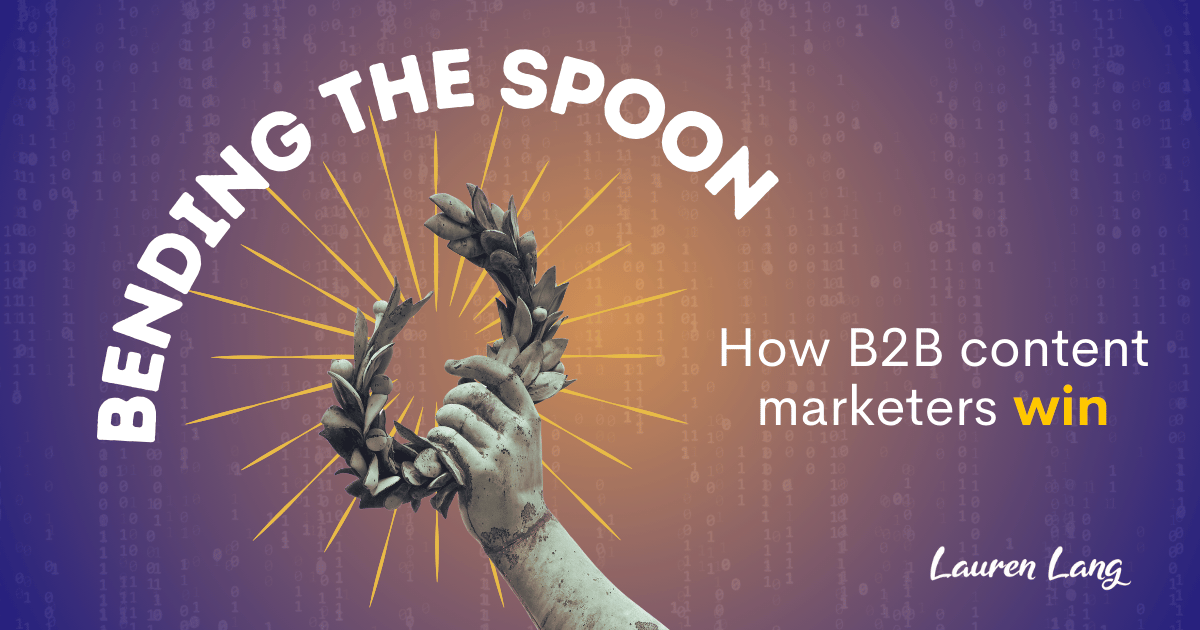It’s right there on my resume from a few years back, and maybe it’s been on yours too. Data-driven.
If there’s a better way to say, “We both know this is bullshit, but let’s dance,” I don’t know what it is.
The obsession with being not just data-informed but data-driven (“what gets measured gets managed!”) is part of the long death rattle of B2B marketing as we know it: a system of wrong, predominantly short-term incentives.
The one that champions performance marketing (because it’s easy to measure) and not brand (because it isn’t). The one that breeds leaders who think marketing should be a “quarters-in, dollars out” vending machine. The one that encourages us to sit around and optimize for metrics instead of doing what content marketing is supposed to do: take risks and try new things that will make us remembered.
It’s time for all that to stop. Today we’re going to be talking about content data: how to use it responsibly, how NOT to use it at all, and how we can change hearts and minds internally about what it says.
Let’s get to it.
💪 Actionable tip: Get smart(er).
In order to use data effectively, you have to be VERY well-versed in what your data means, which is not always what you wish it meant (and boy, don’t I know).
I’ve written here before about the trap of causality, the idea that just because a conversion happened after a prospect read your content, that means your content must have caused that conversion. When you walk into a meeting claiming that to leadership, that’s how your credibility shrivels up and dies on the spot.
So you need to get good at understanding what the data is actually saying. This does not mean you have to be good at math. You just have to be good at common sense.
I have really enjoyed the free “Data Literacy for Marketers” LinkedIn series that Liam Moroney and Dale Harrison have put together. (There have been three episodes so far, which you can find in Liam’s feed.)
I think this should be required watching for content marketers, if only because it gives you the context and vocabulary to start having meaningful conversations with leadership… because content marketing is complex in terms of the data we bring to the table.
And let’s be honest, I’ve seen leaders have really poor understanding of data as well. There is a critical lack of data literacy across B2B organizations — from the marketers sitting in performance meetings like they're in the principal's office to executives who can tell the Winklevoss twins apart better than correlation and causation.
Most leaders do not understand that increasing content production today will not yield results for 6-9 months. They do not always understand that just because you can’t measure brand marketing or content marketing the same way as performance doesn’t mean it’s not worth investing in.
So for me, the main takeaway from this series has been not only how do I get better at data literacy, but how do I change the thinking inside my organization as well? How do I better educate my leadership as to what my dashboards really mean?
Because here’s how NOT to do it:
🚫 Antipattern: Using data as a weapon
For the majority of my marketing career, I witnessed data being used as a cudgel, as a way to justify an agenda already formed — because that was how I was taught to use it by both marketing and business leaders. (I have stories.)
I’ve seen marketing performance reviews go one of two ways, both involving cardinal sins of data storytelling:
You pick and choose which data to share, and obviously you’re going to choose the data that makes you look your best. It’s only human, and when you’re held to arbitrary targets based on the data, you’re going to game those metrics as much as possible. Goodhart’s Law states that any metric that becomes a target ceases to be a useful metric, and this is why. (As I said: wrong incentives.)
You present an overwhelming data dump to try to show leadership alllll the things you’re doing and measuring. Their eyes glaze over, you’ve lost them, and they just want to know why you’re not doing better but OMG don’t get granular because they don’t really care. Just do better. The end.
For the first mistake, your argument falls apart as soon as they start asking questions. You’re weaponizing data by only telling half of the truth. And in the second example, showing them all the things actually has a negative effect because they’re overwhelmed and they think you’re being shifty there too, trying to bamboozle them instead of telling a clear and cogent story. Data feels weaponized because it’s unintelligible.
In either case, what you’re doing isn’t helping.
“But Lauren,” you say politely, because here at Contentious we live in a world of civil public discourse and deep respect for others, “in your list above, sharing allll the data is bad, but so is sharing some of the data. What’s left? What do I do?”
I’m so glad you asked.
💡 Big idea: change the conversation
Okay, so we’re going to have a bit of a “building in public” moment here.
A BIG part of Bending the Spoon is about how to build a content pipeline dashboard: basically tracking what pieces of content an open or closed opp has consumed, both before they became an open opportunity and after they were already a lead.
Given all this talk about data that is making my brain grow in ways that are sometimes uncomfortable, I’ve thought a lot about this dashboard over the past few months or so, and have talked with Liam about what role this dashboard should play in the conversations.
Essentially, there is a right and a wrong way to use a tool like this.
The wrong way would be to take it to leadership and claim that content caused the conversion or obviously accelerated the sales cycle.
The right way would be to show strong correlations for what they are and use them as jumping-off points for some deeper discussions and experiments.
So to answer the super polite and civil question above, I think it’s a little bit of both: use important data to tell an open and transparent story where there may not be an easy, open-and-shut conclusion… and normalize that with your leadership.
I am old enough to have had a high school experience that revolved strongly around the Spice Girls.

And when I was growing up, we learned that there were two kinds of reasoning: deductive and inductive. Quick refresher:
Deductive starts from general principles and moves to specific examples of those principles.
Inductive starts from specific observations that roll up to broader generalizations.
But fellow content marketer Josh Goldberg introduced me a few months ago to the concept of abductive reasoning, which I’d never heard of. Abductive reasoning involves starting with an observation and then offering a logical hypothesis that best explains it but is open to further research and testing. Instead of speaking in absolutes, as inductive and deductive do, it introduces a new word: could.
So if we see a really strong correlation between open opportunities and reading the blog, or if we see that nearly every closed-won opp has read the BOFU buyers’ guide, let’s note that. That’s a good starting point for future investigation — and definitely for conversation with leadership. (Note I’m not claiming causality at all. I’m just pointing out the relationship. How can we test this further? How can we explore the context?)
The more experienced I get, the more I believe the worst possible thing you can do as a marketer is to claim certainty on anything.
That’s where we go wrong — that and thinking that not having data is a moral failure so you pretend to be more certain than you are.
You build more trust by saying what you don’t know, and why you don’t know it (often because the future is hard to predict and the past doesn’t predict it). You build a culture of experimentation by being open about gut instinct and setting expectations that you might be wrong. (And then you really build credibility when that gut feeling turns out to be right.)
Use data to help you when you can. But you’re also smart enough to know that data is only there to inform, not to drive. YOU drive. And even when you can’t always see the map, it’s still good to move forward.
Yours in contention,
Lauren
Bending the Spoon teaches content marketers to think like content leaders by proving the value of their work. I’ll show you how to use data to prove content’s influence on pipeline, how to communicate successfully with executives, and how to build cross-functional relationships that make you an MVP in your organization.










